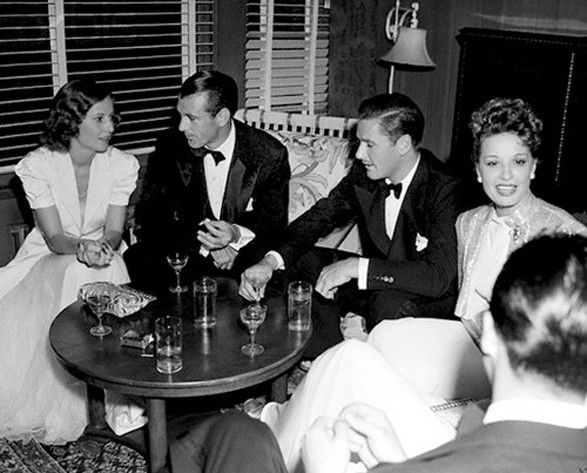What happens when you invite guests for 6:00 PM, but then you get so involved at work that when you look at the time on your computer, it says 5:35? Can you get dressed & made up, set the table and cook dinner in just twenty minutes? The answer is, YES. (The Dean learned this by accident one recent Monday night.)
Here’s what to do:
Resist the urge to immediately call guests and say all of a sudden, you're not feeling well. The Dean knew her menu included seafood stew, a salad, roasted peach halves with bourbon for dessert. What she didn’t know was what to wear or where everyone should sit...
5:35. Turn the oven on broil, put a dutch oven over medium heat and add a slug of olive oil.
5.37. Slice two large peaches in half, fill them with a spoonful of sugar and a slug of bourbon, and put the four peach halves in a sauté pan over high heat.
5:37. Roughly slice a large red onion and place in hot Dutch oven with a few whole garlic cloves, peeled.
5:41. Place sauté pan of peaches under broiler. Put timer on ten minutes. Stir onions.
5:43. Exit kitchen, with onions on medium heat and peaches under broiler. Run three flights upstairs while deciding what to wear.
5:44. Put on one outfit. Decide that looks wrong and put on another shirt. Try to do some quick make up. Whatever!
5:50. Race downstairs to the smell of caramelizing onions (another way of saying they are on their way to burning, but haven't quite. Instead, just perfectly caramelized which means extra flavor.) Stir onions and add a jar of tomato sauce.
5:52. Take out bag of defrosted shrimp and bag of calamari from refrigerator. Realize that even though they have been in the fridge since morning (because you are so organized and an excellent planner) no actual defrosting has taken place...
5:53. Put bags of frozen shrimp and calamari in a bowl and run warm water over bags, saying a little prayer that by 6:25 they will actually thaw!
5:55. Take out four silver forks, knives, spoons, shallow bowls, dessert plates, olives, two different kinds of bourbon and cocktail glasses.
6:00. READY TO ROLL! Doorbell rings, guests arrive.
The Dean then explained the situation, garnering laughs and offers to pitch in. Cocktails? One guy choose bourbon, one guy soda water, one woman white wine. High-alcohol beer for the host. While cocktails were being organized and poured, the Dean threw together the famous Academy croutons while tomatoes and onions simmered on low, the peaches came down to room temperature, and seafood (still) thawed in the sink. Finally, where to eat? Decision: a movable feast. One small garden table for Stew. Another small garden table for salad. By the time the mosquitos started biting, everyone moved inside for dessert of roasted peaches and chocolate bars at the dining table.
Perfect!







